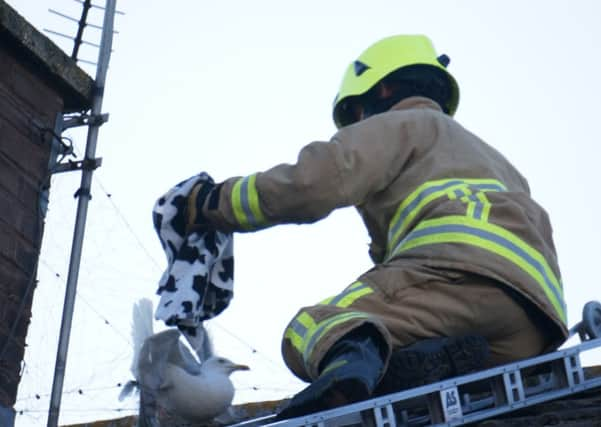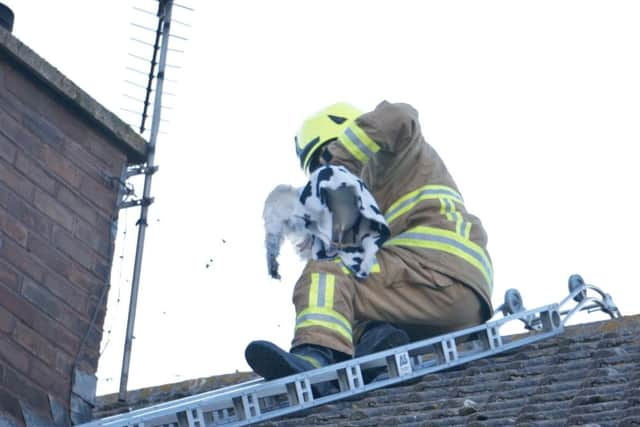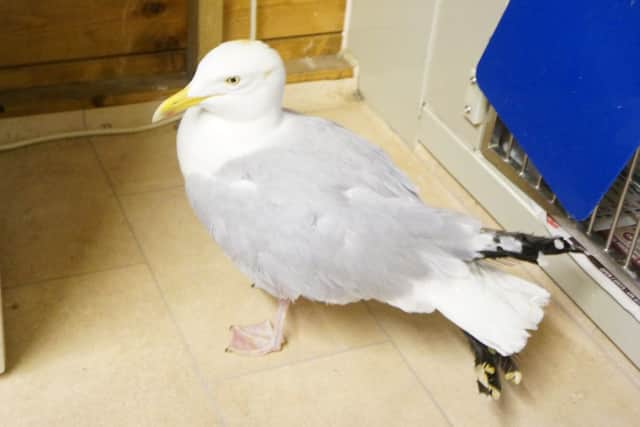Rooftop rescue prompts RSPCA warning


The gull was badly caught up, with netting wrapped around its wing and foot.
The owner of the house spotted it in distress mid-afternoon on Tuesday and called the RSPCA.
Advertisement
Hide AdAdvertisement
Hide AdThe charity has now put out an appeal to homeowners to be careful with netting they put on their roofs to deter gulls this summer.
RSPCA inspector Liz Wheeler said: “We see this kind of thing happening all the time during the summer months.
“People put netting on their rooftops to deter birds from nesting but it’s often not put up properly, causing birds to become trapped and to suffer.”
Firefighters had to cut the bird out of the strong nylon netting and wire on the roof in Princess Avenue, Worthing, It was found to have some wing damage, so the bird was taken to a local vet, who kept it in overnight so it could regain some energy after its ordeal.
Advertisement
Hide AdAdvertisement
Hide AdMs Wheeler added: “It is an offence to intentionally trap wild birds like gulls, so we are asking people to be mindful of their actions and make sure that if they do use netting, they install it correctly and regularly check and maintain it.


“We spend all summer getting trapped gulls out of roof netting and it’s easily avoidable.”
Gulls and their nests are protected under the Wildlife and Countryside Act 1981 and it is illegal to intentionally kill, take or injure wild birds - action can be taken against them only under licence. Anyone who traps a bird may then be responsible for its care under the Animal Welfare Act 2006.
It is also illegal to take or damage a nest or egg of a wild bird. Herring gulls in particular are a species of conservation concern in the UK and research has shown that overall herring gull populations are actually in decline.
Advertisement
Hide AdAdvertisement
Hide AdEach year, around 2,000 reports are made to the RSPCA about wild birds trapped in or behind netting. A major cause is bird-deterrent netting. This can be a humane and effective way of keeping birds off structures without resorting to lethal measures, but it must be fit for purpose, correctly installed and regularly checked and maintained.


Problems arise when netting is put up incorrectly or becomes damaged, leaving gaps where birds can enter and become trapped. These birds can suffer a long and painful death from injury or starvation. Bird-deterrent netting is often fixed in high or hard-to-reach areas, making the rescue of trapped animals difficult and dangerous.
People who see dead birds in netting, or are aware of a regular issue of birds becoming trapped in netting, are asked to tell the RSPCA the address, property owner (if known) and date of the incident by emailing [email protected]. The charity will then write to the owner with advice and guidance.
If you find an injured gull, see one trapped in netting, or have any information on a gull being treated cruelly, call the RSPCA’s cruelty line on 0300 1234 999.